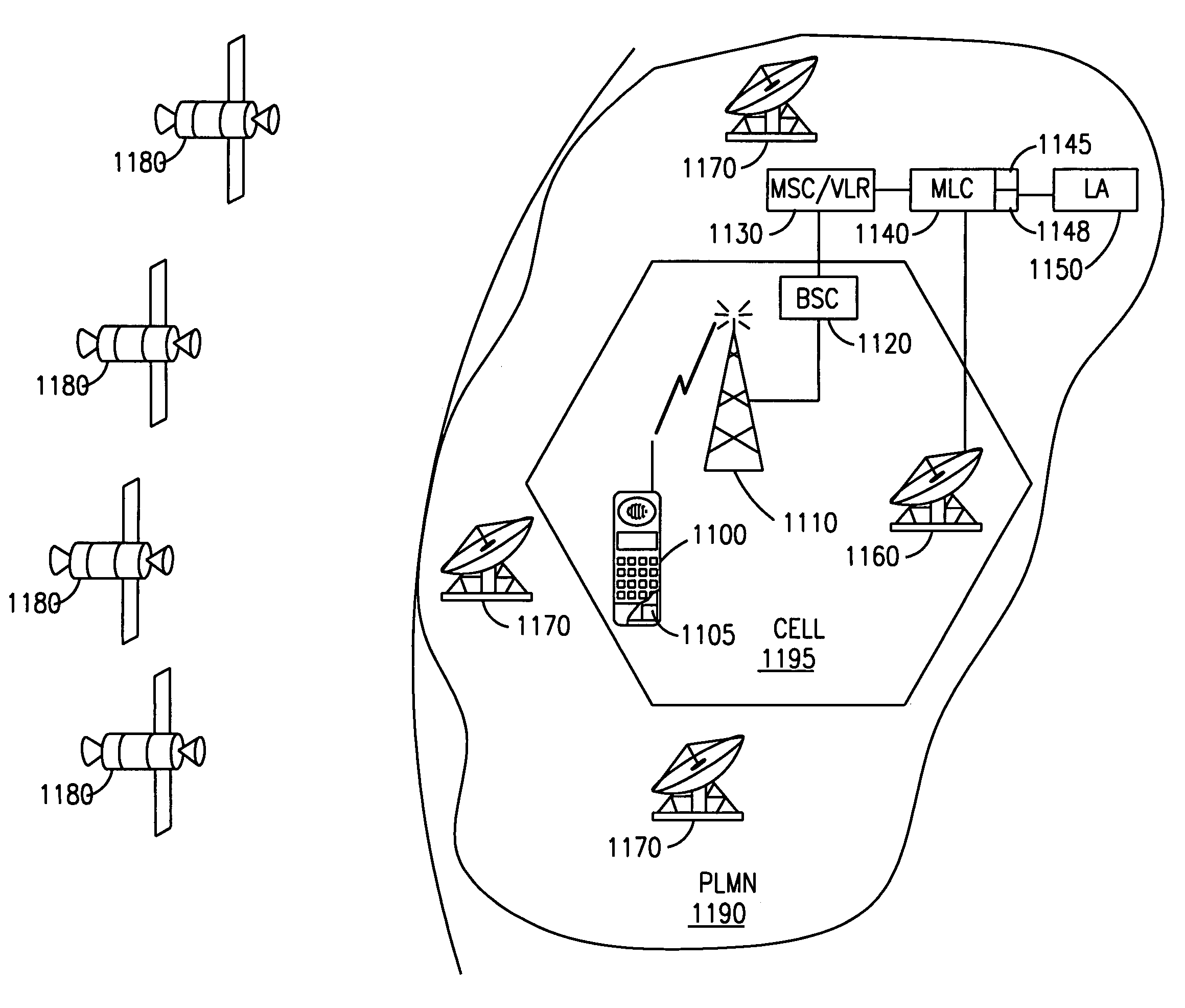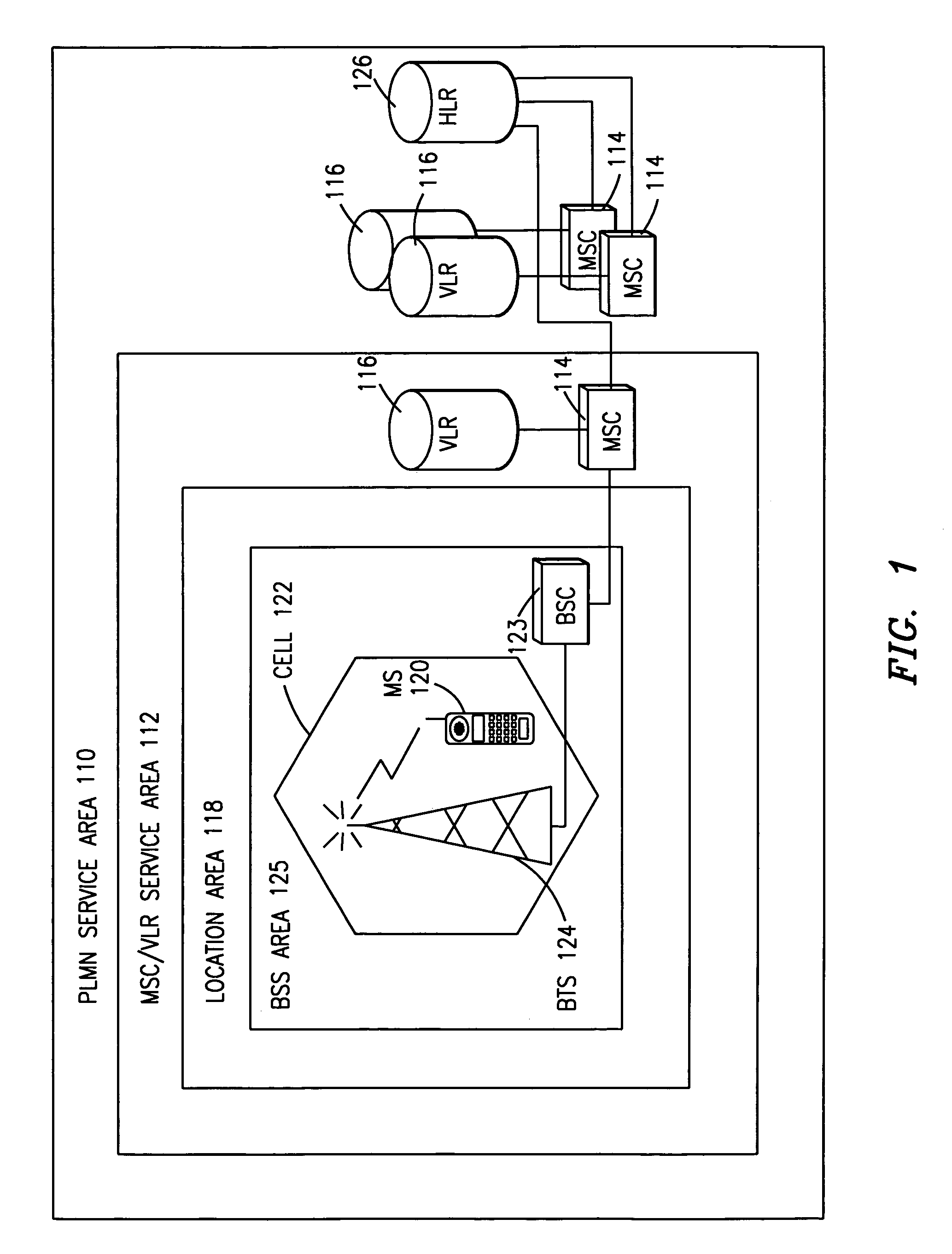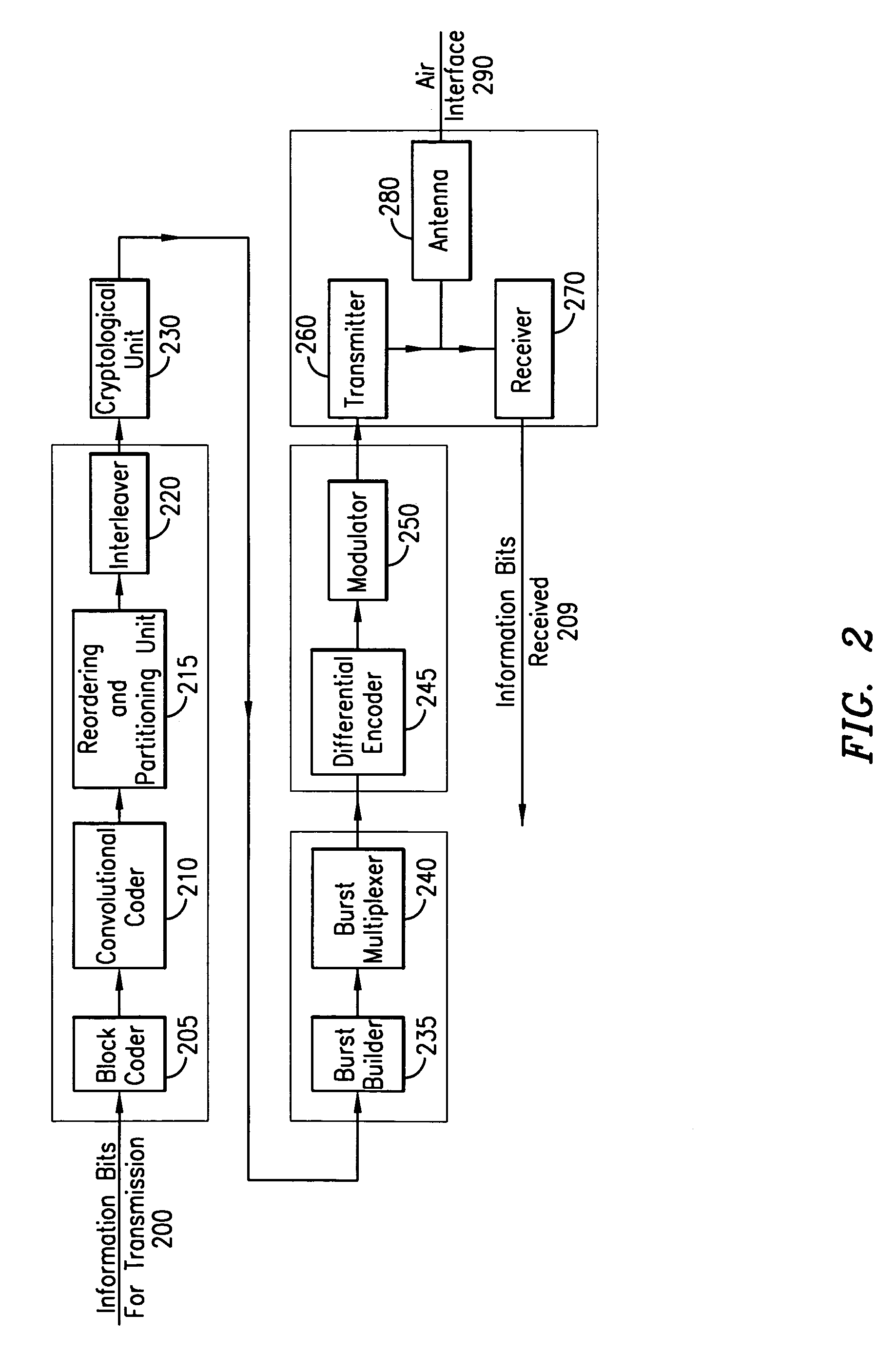System and method for fast cold start of a GPS receiver in a telecommunications environment
- Summary
- Abstract
- Description
- Claims
- Application Information
AI Technical Summary
Benefits of technology
Problems solved by technology
Method used
Image
Examples
Embodiment Construction
[0037]The present invention will now be described more fully hereinafter with reference to the accompanying drawings, in which preferred embodiments of the invention are shown. This invention may, however, be embodied in many different forms and should not be construed as limited to the embodiments set forth herein; rather, these embodiments are provided so that this disclosure will be thorough and complete, and will fully convey the scope of the invention to those skilled in the art.
[0038]By way of background, the European Telecommunications Standards Institute (ETSI) established a standardization group in 1982 to formulate the specifications for the Global System for Mobile (GSM) Communication digital mobile cellular radio system. The ETSI GSM Standard uses Time Division Multiple Access (TDMA) Channel Multiplexing Scheme.
[0039]FIG. 1 illustrates a Public Land Mobile Network (PLMN), such as the exemplary GSM cellular network 110, which in turn comprises a plurality of MSC / VLR Servi...
PUM
 Login to View More
Login to View More Abstract
Description
Claims
Application Information
 Login to View More
Login to View More - R&D
- Intellectual Property
- Life Sciences
- Materials
- Tech Scout
- Unparalleled Data Quality
- Higher Quality Content
- 60% Fewer Hallucinations
Browse by: Latest US Patents, China's latest patents, Technical Efficacy Thesaurus, Application Domain, Technology Topic, Popular Technical Reports.
© 2025 PatSnap. All rights reserved.Legal|Privacy policy|Modern Slavery Act Transparency Statement|Sitemap|About US| Contact US: help@patsnap.com



